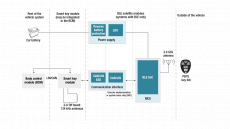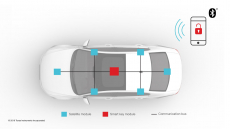便宜发
金融理财
Sidebar
This satellite module reference design is intended for Bluetooth® low energy passive entry passive start (PEPS) and phone as a key / digital key car access systems. The design demonstrates how control area network flexible data rate (CAN-FD) communication capabilities can be implemented with our Bluetooth wireless MCUs for systems that require higher bandwidth in-vehicle networking communications. Further benefits include reduced power consumption in the sleep state, our CAN auto-addressing method for improved manufacturing, connection monitor capabilities for improved Bluetooth localization accuracy and a compact printed-circuit board (PCB) capable of measuring Bluetooth angle of arrival (AoA) and received signal strength index (RSSI).
Ti integrated circuits and reference designs help you design passive entry passive start (PEPS) modules and key fobs that are secure and compact while reducing system power consumption and optimizing RF and vehicle
Published in
technical articles
In a passive-entry-passive-start (PEPS) automotive system using Bluetooth® Low Energy technology, drivers enter their car and start the electric motor (or engine, in the case of an internal combustion engine) using a key fob that communicates with the car’s access systems, instead of a key.
Published in
technical articles
Generic Attribute Profile (GATT) is built on top of the Attribute Protocol (ATT) and establishes common operations and a framework for the data transported and stored by the Attribute Protocol. For more information on GATT, please refer to Volume 0, Section 6 of the Bluetooth® Core Specification.
Published in
Popular Science
Tuesday, 22 September 2020 00:57
Renesas Bluetooth® Low Energy Protocol Stack for RX family
To use the RX23W Bluetooth feature, a protocol stack conforming to the Bluetooth specification is required. Also, the Bluetooth-compliant profiles and mesh software enhance your Bluetooth product interoperability in a wide application area.
Read 41388 times
Published in
Bluetooth 5 (BLE5) Stack
Download attachments:
- Bluetooth® Low Energy Protocol Stack Basic Package (28634 Downloads)
- RX23W Group Bluetooth Low Energy Profile Developer's Guide Application Note (28156 Downloads)
Bluetooth® Low Energy Wireless Solution to Accelerate Realization of IoT of Embedded Devices.
Single chip Bluetooth® 5.0 Low Energy application controller using popular ARM Cortex M4 core with dedicated Secure Crypto Engine
Published in
technical articles


